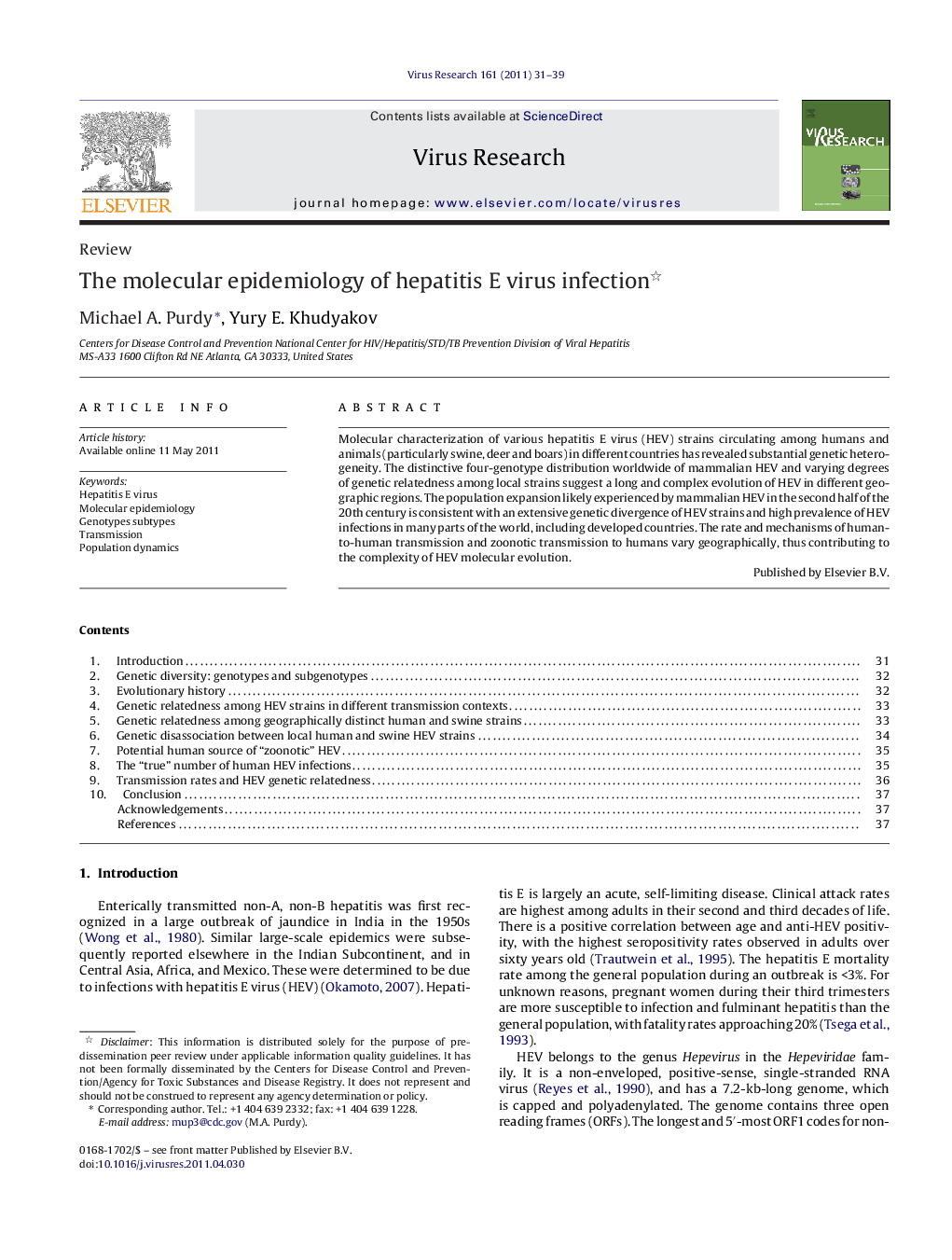| Article ID | Journal | Published Year | Pages | File Type |
|---|---|---|---|---|
| 3428972 | Virus Research | 2011 | 9 Pages |
Molecular characterization of various hepatitis E virus (HEV) strains circulating among humans and animals (particularly swine, deer and boars) in different countries has revealed substantial genetic heterogeneity. The distinctive four-genotype distribution worldwide of mammalian HEV and varying degrees of genetic relatedness among local strains suggest a long and complex evolution of HEV in different geographic regions. The population expansion likely experienced by mammalian HEV in the second half of the 20th century is consistent with an extensive genetic divergence of HEV strains and high prevalence of HEV infections in many parts of the world, including developed countries. The rate and mechanisms of human-to-human transmission and zoonotic transmission to humans vary geographically, thus contributing to the complexity of HEV molecular evolution.
